The truth is that just getting a page to rank for a keyword phrase is only a part of the work behind a comprehensive SEO strategy. You actually need to get those searchers to click through to your site.
23/*
— Darth Autocrat (Lyndon NA) (@darth_na) November 12, 2021
Change your research, the docs and reports you make.
Do NOT just include Term, Volume & CPC!
Include:
Primary term(s)
Term group
Intent of each term
Intent triggers (or if implied)
Journey stage
Synonymous words/phrases
Terms that make a difference (or not)
Terms to avoid pic.twitter.com/tvsIVaUbdR
If you are Struggling to find easy-to-rank keyword phrases search terms with higher conversion rates and are more likely to actually click?
The answer is “Long Tail keywords.”
These occur when searchers are looking for very specific information. These terms are fantastic options to explore when you’re trying to differentiate your content. You might also get longer phrases from someone who is using “voice search” because those services tend to provide overly generic responses to less specific questions, and since they are read JUST one result, users tend to become MUCH more specific in their questions.
What Are Long Tail Keywords?
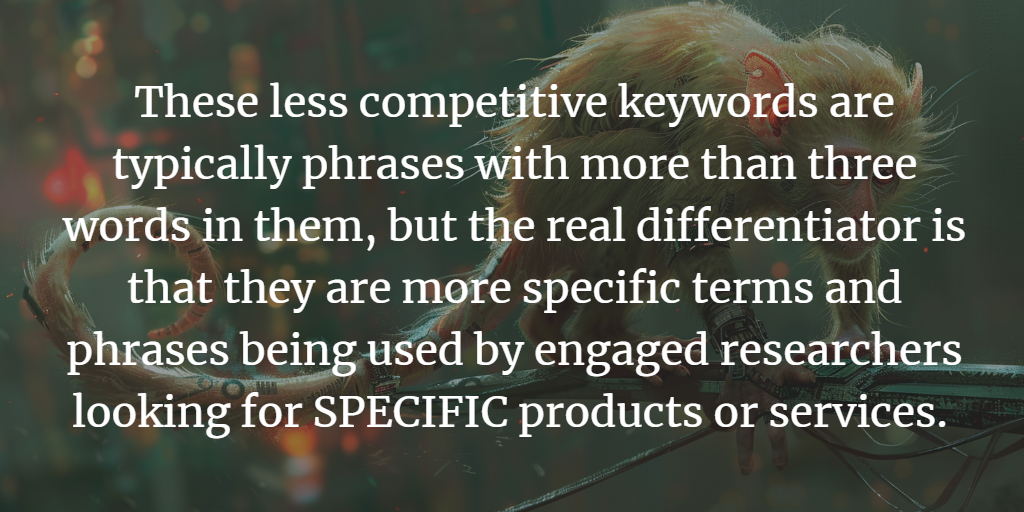
These less competitive keywords are typically phrases with more than three words in them, but the real differentiator is that they are more specific terms and phrases being used by engaged researchers looking for SPECIFIC products or services. While “head terms” may have more searches, they tend to be more general or generic searches, but a long-tail query indicates a more focused, specific interest that’s useful for site owners to target with hyper-relevant content.
When searchers are close to purchase, take action or have specific details they want they will be researching “Long tail keywords”.
It’s the difference between someone just typing in “laptop” & “What is the cost of a Macbook Air 16 inch display?”.
Don’t be confused when you’re doing your keyword research and forecasting though, because “long tail” doesn’t actually 100% mean it’s a 4+ word combination, instead it’s a reference to the level of volume for searches in a particular keyword niche. The “tail” is the low
To compensate for a lower number of searchers using these phrases they typically see higher conversion rates.
Although there’s no word count limit on long tial, they tend to be longer than “head phrases”, which are generally just one or two word combos.
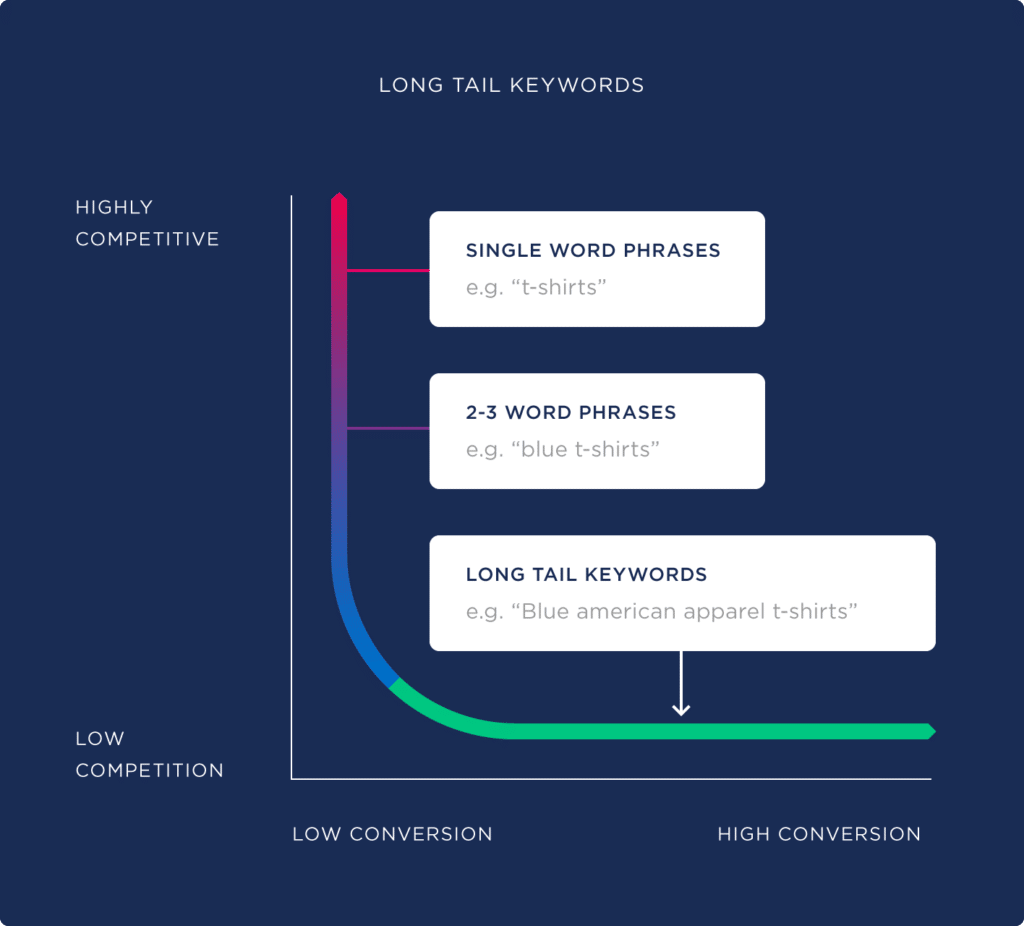
While there’s less traffic to these queries, the INTENT behind them indicates the searcher is actually closer to “pulling the trigger. The knock on effect is that your competitors will [generally] see the higher search volumes for “head phrases” and not compete as heavily for these more niche phrases. Boom! Niche market!
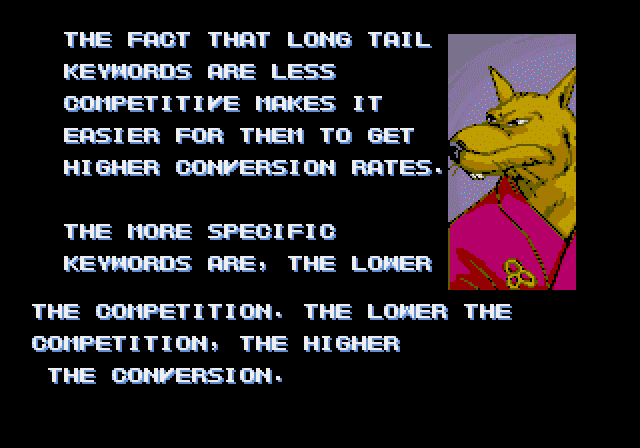
Produce Satisfying content with Long Tail Keywords
Keywords should be like customer research calls. If your customer is looking for a specific way to deal with a problem, you should rank for that specific way to deal with a problem Lighter may have a ton of search volume, but if you sell candle lighters… Worry about that term
Chris Rydburg
If you’re taking the time to understand your target audience, and getting past the SUPER obvious keywords, you can eliminate the doubts and friction that are keeping them from purchasing!
- Long-Tail Keywords Are Essential in Building a Strong Sales Funnel
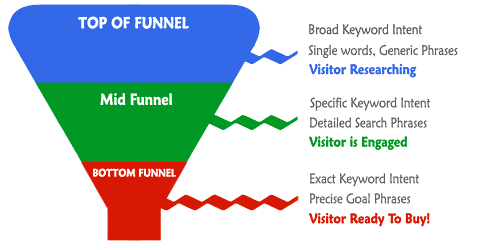
When people are looking for a product or service, not everyone is ready to buy. They need to see what’s out there, capabilities, overcome doubts and convince themselves they’re getting the best deal on price or quality.
For example, someone looking for “SEO tools” vs “SEO keyword forecasting in Google Sheets“
- Less Organic Competition Makes Long Tail Keywords More Rankable.
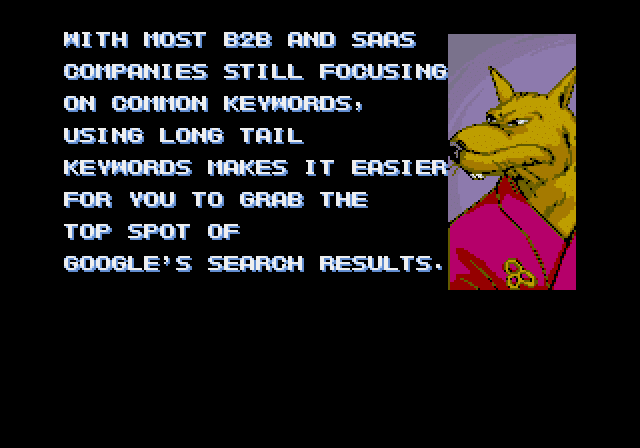
Think about how many websites right now are about “dresses”. It would take an enormous budget and persistant effort to make it into the top results, and you have real world businesses in the way! However, if you’ve got a “Yellow plus size organic cotton sundress”, you’ve cut down your competition dramatically and could realistically rank your page.
